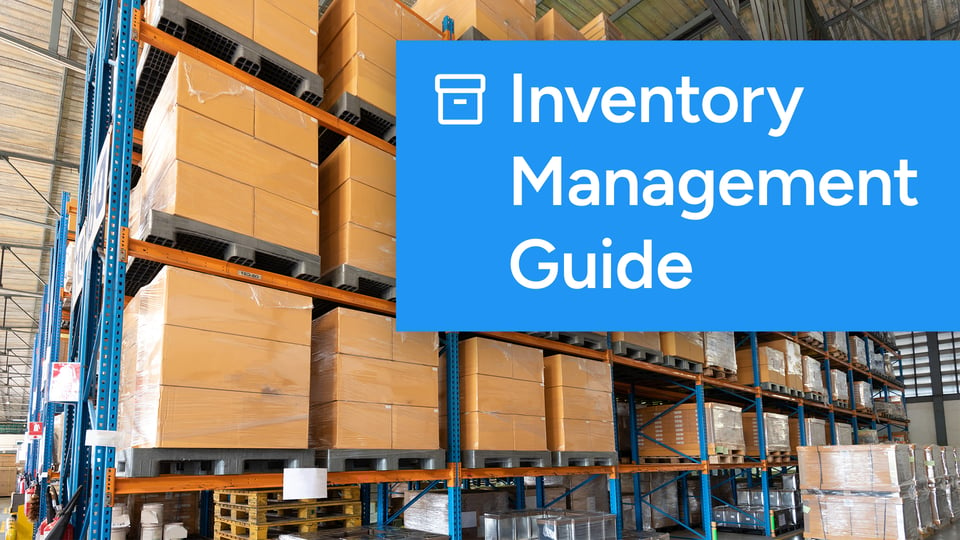Inventory management across many sources and channels is a pressing issue in the growing digital landscape. While many firms use cutting-edge technology to facilitate and automate much of the process, this is not always the case in ecommerce. 55% of ecommerce businesses still try to manage their inventory manually.
Thankfully, with some planning, an intelligent system, and some trial and error, keeping track of your inventory across several channels and sources may be simplified.
In this guide, we'll discuss the world of multichannel inventory management, explaining what it is, how it works in action, and what you need to achieve it successfully.
What is multichannel inventory management?
The process of tracking and controlling your product stock across a number of sales channels, both online and offline, is known as multichannel inventory management. Your ecommerce website, marketplaces such as Amazon and eBay, physical storefronts, and social media platforms are examples of these channels. The objective is to avoid overselling, stockouts, or disappointing customers.
Streamlining information sharing across various departments is crucial in the inventory management process. Having a reliable inventory data source accessible to all stakeholders eliminates alignment challenges.
Inventory serves as the core of ecommerce operations, and efficient management across multiple channels is now essential for both internal competitiveness and a seamless customer experience.
Consistency in customer interactions across different platforms has driven the focus on multichannel inventory management in recent years. Moreover, shoppers who engage across multiple channels will purchase more often from a retailer.

When executed effectively, customers are unaware of the complexity behind inventory management, and challenges go unnoticed.
The outcome for customers is the ability to order from any source, choose their preferred delivery method, and never encounter unexpected stock issues.
Across an organization, this approach ensures real-time inventory data, predictable stock levels, and consistently high customer satisfaction.
What multichannel inventory management looks like in action
Imagine you run a business selling electronic gadgets, initially focusing on a single platform like Shopify. Managing inventory and order fulfillment is relatively straightforward since all customer orders funnel through this single platform, enabling you to track your stock levels and fulfill orders easily.
However, your business starts to thrive, and you spot opportunities to broaden your customer base by selling on multiple marketplaces. You expand your reach by setting up storefronts on eBay and Amazon, resulting in orders from three platforms. This situation significantly complicates your ability to monitor inventory accurately.
For instance, if you have 100 smartphones in stock, you could set your inventory to 100 on all three sales channels. Yet, this approach carries the risk of overselling. Suppose you sell 40 smartphones on Shopify, 30 on eBay, and 30 on Amazon on the same day before updating each platform's inventory count. In that case, you've effectively sold 20 smartphones you haven't even procured yet.
Maintaining precise product counts becomes virtually impossible without a central and automated inventory management system. Attempting manual tracking puts you at risk of disappointing customers with delayed or cancelled orders due to insufficient stock.
As your business grows, you might consider increasing production and seeking additional storage space and quicker order fulfillment. This could involve leasing warehouse facilities or outsourcing fulfillment. In such a scenario, you are no longer solely responsible for handling the packaging and shipping of each product.
Failing to maintain accurate inventory threatens your partnerships with fulfillment providers and poses a substantial risk to your business. Incorrect stock levels can negatively impact sales, fulfillment efficiency, and your reputation in the market. Establishing proper inventory management becomes imperative to ensure the smooth operation and expansion of your multi channel ecommerce enterprise.
Riviera Maison’s Success with ChannelEngine
Challenge: Riviera Maison, a high-end home furnishings brand, struggled with manual inventory and order management processes that limited their scalability and responsiveness to market demands.
Solution: By integrating their systems with ChannelEngine, Riviera Maison automated key aspects of inventory and order management. This transition allowed for real-time inventory tracking across all channels, reducing errors and enabling timely fulfillment.
Result: Riviera Maison significantly enhanced its multichannel capabilities, leading to increased sales and a scalable framework to support future growth.
Read Riviera Maison's detailed success story here.
Achieving multichannel inventory management
Now, let's paint a picture of how multichannel inventory management comes to life. Let's consider a scenario with a brand using a headless commerce setup, with essential systems linked together with marketplace integration software.
Robust Back End Architecture (WMS, ERP, PIM)
Your operations are fine-tuned behind the scenes. A Warehouse Management System (WMS) methodically tracks every commodity in your warehouse. In addition, an Enterprise Resource Planning (ERP) system seamlessly manages financial affairs, order processing, and inventory control.
A Product Information Management (PIM) system ensures consistency and accuracy in product data across all channels. These systems work together to form the foundation of your inventory management, allowing for efficient and synchronized operations.
Multiple Sales Channels
You're not putting all your eggs in one basket. You sell through your website, Amazon, and physical stores. Each channel caters to a different audience, expanding your reach and diversifying your revenue streams. But with multiple channels comes the need for coordinated inventory control.
Selling on multiple marketplaces is also great for cross border expansion, enabling you to tap into cohorts of relevant consumers in different regions.
Ecommerce Integration Software
To streamline operations, you use ecommerce integration software. This powerful tool connects all your sales channels and your back-end systems. When a customer purchases on Amazon, the integration software automatically deducts the sold item from your inventory across all channels, preventing overselling or stockouts.
Data shows the average level of inventory accuracy in the US is only 63%, resulting in stockouts and a negative customer experience. Ecommerce integration software helps retailers negate the issues surrounding traditional manual inventory management.
Relevant KPIs
Key Performance Indicators (KPIs) keep you on the right track. You closely monitor metrics like inventory turnover rate, sell-through rate, and days of inventory on hand. These numbers guide your decisions, helping you optimize stock levels, identify slow-moving products, and forecast demand accurately. Data is your best friend in multichannel inventory management.
For example, suppose you're planning for Black Friday. In that case, you can consider what products you'll need to resupply before the event, then evaluate previous sales data to estimate which items will sell the fastest and prepare accordingly.
Trained Staff
Everyone on your team recognizes the crucial nature of multichannel inventory management. They realize it is more than just tracking product quantities; it is about exceeding customer expectations, streamlining processes, and protecting your brand's reputation.
The team's knowledge of systems and software, such as WMS, ERP, and PIM, enables them to manage inventory efficiently, update levels, and maintain consistent and accurate product information across all channels. Furthermore, their agility allows them to respond quickly to unexpected changes in demand or supply chain disruptions, ensuring your inventory management stays agile and responsive.
Best practices for multichannel inventory management
Monitor Key Inventory Metrics:
- Turnover Rate: Track how quickly inventory cycles through to optimize reorder schedules.
- Safety Stock Levels: Maintain buffer stock for high-demand items to mitigate stockouts.
- Demand Forecasting: Use historical sales data and market trends to predict demand, particularly for seasonal items.
Automate Where Possible:
- Automate product listing updates, order routing, and inventory syncs to reduce manual errors and improve efficiency.
Regular Stock Audits:
- Conduct routine audits to verify physical stock against system records and prevent discrepancies.
Centralized Data Management:
- Leverage a single source of truth for all data, using integrated systems to manage inventory across multiple channels from one platform.
Final words
In the rapidly evolving digital marketplace, mastering multichannel inventory management is no longer a luxury but a necessity. But by using ecommerce integration software to link their WMS, ERP, and PIM systems, brands can achieve an advanced inventory management process.
Speak to an ecommerce expert and get your custom demo today.




